For those who don’t want to break their reliance on fossil fuels completely by purchasing a fully electric vehicle, known as an EV or BEV (battery electric vehicle), a plug-in hybrid (PHEV) is a great alternative.
PHEVs deliver great fuel economy and lower emissions, while still being able to take advantage of the speedy refuelling options and range advantages associated with conventional internal combustion engine (ICE) vehicles.
In this article we look at the most popular PHEV cars in New Zealand:
Top selling PHEVs in New Zealand
It’s interesting to note that so far this year PHEV sales, like EV sales, have dropped off a cliff. In a rush to beat the Clean Car Discount shut-off date, a record 3361 EVs were sold in the last month of 2023, compared to a total of 1082 in the first quarter of this year. Likewise, 986 PHEVs were sold in December, and just 591 so far this year.
However, sales of petrol hybrid cars, which don’t plug in to charge (see below) and are exempt from Road User Charges, remain relatively strong, posting a monthly average of 2258 new cars this year (for a total of 6774), compared to 2621 in the last month of 2023.
The sales figures below are based on data from the Motor Industry Association:
| Top Selling PHEVs 2023 | Top Selling PHEVs March 2024 |
Top Selling PHEVs Year to Date 2024 |
| 1 Mitsubishi Eclipse Cross (2777) | 1 Mitsubishi Eclipse Cross (32) | 1 Mitsubishi Outlander (83) |
| 2 Mitsubishi Outlander (1934) | 2 Mitsubishi Outlander (31) | 2 Mitsubishi Eclipse Cross (72) |
| 3 Kia Sorento (718) | 3 Mini Countryman (30) | 3 Mini Countryman (60) |
| 4 Ford Escape (595) | 4 Mazda CX-60 (17) | 4 Porsche Cayenne (42) |
| 5 MG HS (506) | 5 Land Rover Sport (13) | 5 Land Rover Defender (33) |
Compare car insurance with Canstar
Below is an overview of the top-selling PHEVs of 2023 in New Zealand. Prices do not include on-road costs and should be used as a guide only.
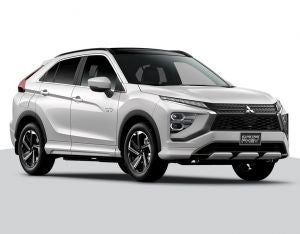
Mitsubishi Eclipse Cross – from $52,990
The Mitsubishi Eclipse Cross was 2023’s most popular PHEV by a considerable margin. Its only real rival was its big cousin, the Outlander. The Eclipse Cross comes with all the usual bells and whistles you’d expect from a modern SUV, including driving assist features such as forward collision mitigation and pedestrian approach warnings. Plus it comes in 4WD for those who want to truly utilise its SUV credentials. The Eclipse Cross PHEV offers up to 55km of EV range, and a 25-minute fast charge.
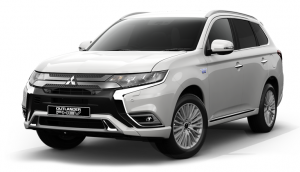
Mitsubishi Outlander PHEV– from $62,990
The Mitsubishi Outlander was No.2 on 2023’s list of top selling cars. So it’s no surprise that the Mitsubishi Outlander PHEV is one of the most-popular plug-in hybrid cars, too. The Mitsubishi Outlander is perfect for those who want just a little more than the Eclipse Cross offers, whether a little more space, a little more grunt, or a little more range (84km EV range as opposed to 55km). Like the Eclipse Cross, the Outlander PHEV comes with all the modern luxuries and safety features, 4WD, 25-minute fast charge and that reliable Mitsubishi name.

Kia Sorento PHEV – from $79,990
Kia’s seven-seat Sorento is a big beast and comes in a range of models, covering petrol, diesel, petrol hybrids and two PHEVs: the AWD EX and the AWD Premium. Both models feature a 1.6L T-GDi Turbo petrol engine, but thanks to their PHEV credentials deliver a fuel economy of 1L per 100km. In EV mode, the cars have a maximum range of 57km, and both come with all the luxury and safety features you’d expect given their high price tags.
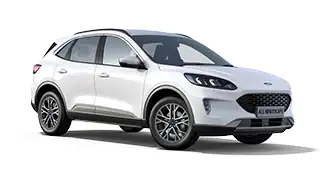
Ford Escape PHEV – from $68,990
The Escape PHEV is Ford’s first plug-in hybrid SUV. It has an EV range of 56km and delivers a combined fuel economy of 1.6L/100km. The car also comes in an ST-Line X model, which starts at $68,990 and offers higher tech levels and luxury plus sports styling.
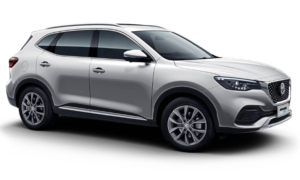
MG HS PHEV – from $50,990
The MG ZS PHEV is one of the cheapest plug-in hybrids on the market, and one of the most popular. It comes in two iterations: Excite and Essence. While both are the same under the hood, the Essence packs a few extra safety features and premium touches, including 360° degree cameras, a sunroof, heated wing mirrors and leather seats. Regardless of which model you choose, safety is at the forefront. MG Pilot provides a suite of safety driving aids, such as forward collision warning, blind spot monitoring and lane change assist. The MG HS Plus EV also delivers a very impressive 63km range on battery alone.
→Related Article: Top Selling Electric Cars in New Zealand
Compare Outstanding Value Car Insurance with Canstar
Looking for great value car insurance for you and your family? Each year, we release our car insurance awards, including winners for Insurer of the Year, Outstanding Value, and Most Satisfied Customers. As part of our award results, we also publish our Outstanding Value Star Ratings, covering car insurance for different age groups. Below are our top-rated providers in the drivers aged 30-49 category. Click here to view our complete car insurance Star Ratings for all age groups.
Comprehensive Cover: Drivers 30-49:
| Provider | Star Rating |
 |
|
 |
 |
 |
 |
See here for our ratings methodology. The table above is an abridged version of our research. For the full results of our latest Car Insurance Ratings and Award, click here.
Hybrid options: petrol hybrid vs plug-in hybrid
Petrol hybrid (FHEV/HEV)
Petrol hybrids, like the first mass-produced hybrid car, the Toyota Prius, feature a battery that is charged during driving, not from an external power source. The car’s electric motor is reserved for stop-start urban driving, while a petrol engine does the heavy work. Because of a petrol hybrid’s reliance on its conventional engine, fuel savings are limited. However, because of their dependence on gas, petrol hybrids won’t be affected by the introduction of Road User Charges for EV and PHEV users, on April 01.
Plug-in hybrid (PHEV)
A plug-in hybrid has a large battery and a powerful electric motor that, together, allow you to drive at speed for long distances, from around 40km to 80km, depending on the model. Like fully electric vehicles, plug-in hybrids need to be plugged in and charged.
When used for day-to-day city driving and short commutes, plug-in hybrids offer a gas-free driving experience, along with the assurance of a petrol engine for longer road trips. However, from April 01 this year, they will be subject to Road User Charges. For more on those extra costs for PHEV drivers, click here.
Mild-hybrid (MHEV)
Not as common as plug-in or petrol hybrids, mild hybrid electric vehicles use a battery-powered electric motor alongside a conventional petrol engine to improve efficiency. Mild hybrids use regenerative braking to charge their batteries while driving. They don’t charge from an external power source and are not capable of electric-only driving.
→Related Article: How much will Road User Charges cost EV and PHEV drivers?
Looking for a Great Car Loan?
The table below displays some of the unsecured personal loan products available on Canstar’s database for a three-year loan of $10,000 in Auckland (some may have links to lenders’ websites). The products are sorted by Star Rating (highest to lowest) followed by company name (alphabetical). Use Canstar’s personal loan comparison selector to view a wider range of products on Canstar’s database. Canstar may earn a fee for referrals.
Compare car loans with Canstar
 About the author of this page
About the author of this page
This report was written by Canstar’s Editor, Bruce Pitchers. Bruce has three decades’ experience as a journalist and has worked for major media companies in the UK and Australasia, including ACP, Bauer Media Group, Fairfax, Pacific Magazines, News Corp and TVNZ. Prior to Canstar, he worked as a freelancer, including for The Australian Financial Review, the NZ Financial Markets Authority, and for real estate companies on both sides of the Tasman.
Enjoy reading this article?
Sign up to receive more news like this straight to your inbox.
By subscribing you agree to the Canstar Privacy Policy



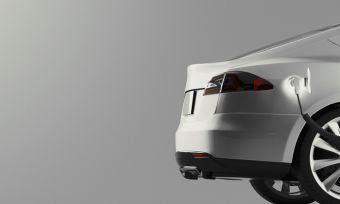
Share this article